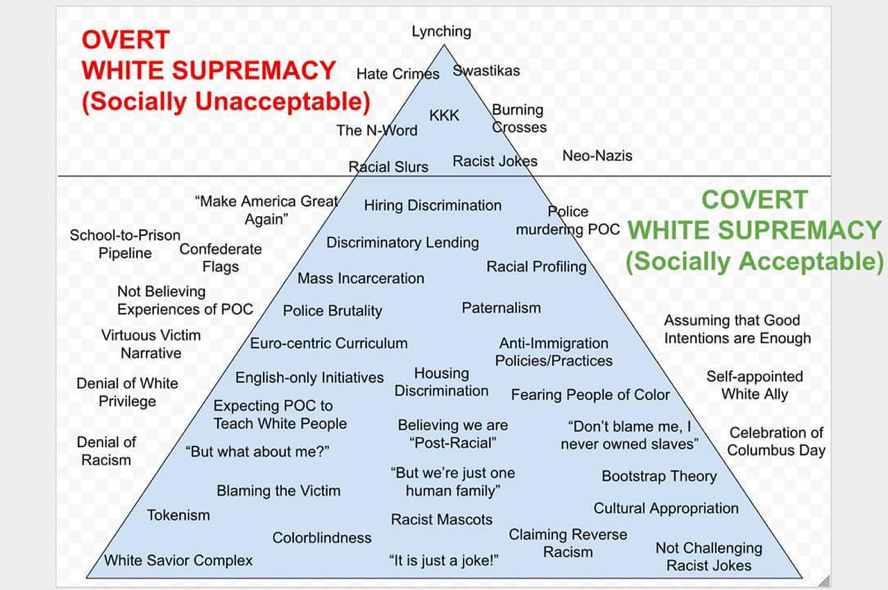One of my favorite graphic organizers, that fits my visual learning style well, is the Iceberg Model. Today I spent a little time researching the history of this model and it’s various uses over the last century because it recently resurfaced as a vehicle for explaining overt and covert white supremacy.
Developed by Safehouse Progressive Alliance for Nonviolence (2005)
and adapted by Ellen Tuzzolo (2016)
Developed by Safehouse Progressive Alliance for Nonviolence (2005)
and adapted by Ellen Tuzzolo (2016)
As far as I can tell, Freud was the first person to used this model in the early decades of last century. He used it to show the relationship between the conscious and unconscious mind. Edward T. Hall, a cultural anthropologist, developed the Culture Iceberg in the 1970s. Malow’s Hierarchy of Needs pyramid From the 1940s seems to have lent itself nicely to various Behavior Iceberg models that emerged in the decades since, and no double contributed to the philosophy of the Whole Child in education.
Jim Cummins, a Canadian Professor at the Ontario Institute for Studies in Education, developed his own Iceberg Models to illustrate his theories of language acquisition and learning. These are the first models I encountered in my education.
Like any good graphic organizer, or model, the Iceberg is easily adaptable to any number of academic purposes. Who knows, maybe we will even find ways to use it in sixth grade next year. Instead of our character trait hands, maybe icebergs showing the traits most people notice easily and those they may not notice at all. Or perhaps a culture iceberg to introduce Jim Crow laws and their underlying beliefs in our newly expanded history curriculum. (Great Titanic tie in!) Or simply an adapted BICS and CALP model to help my caseload students better understand why they are still considered English Learners after all these years. Hmm...







Very powerful!
ReplyDelete